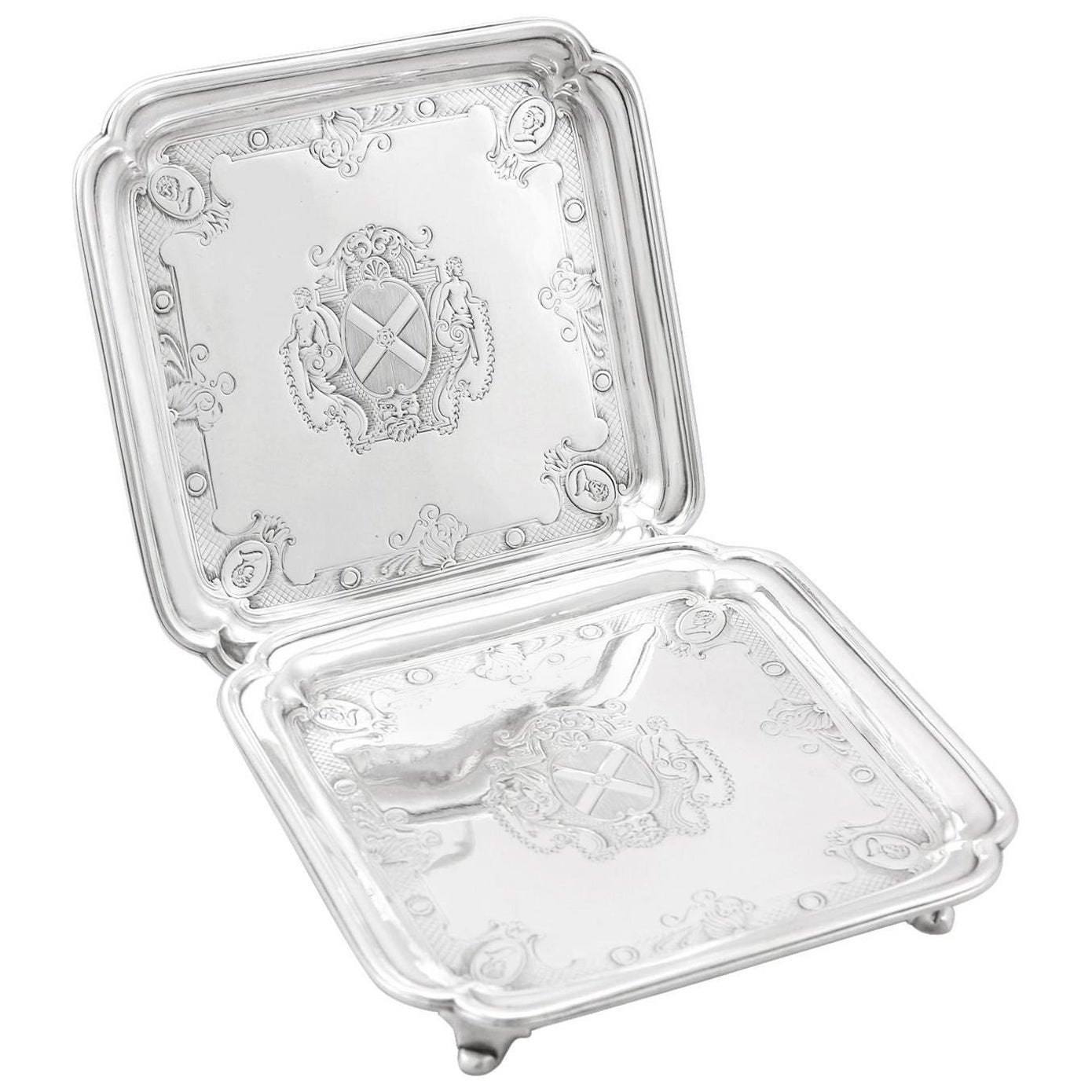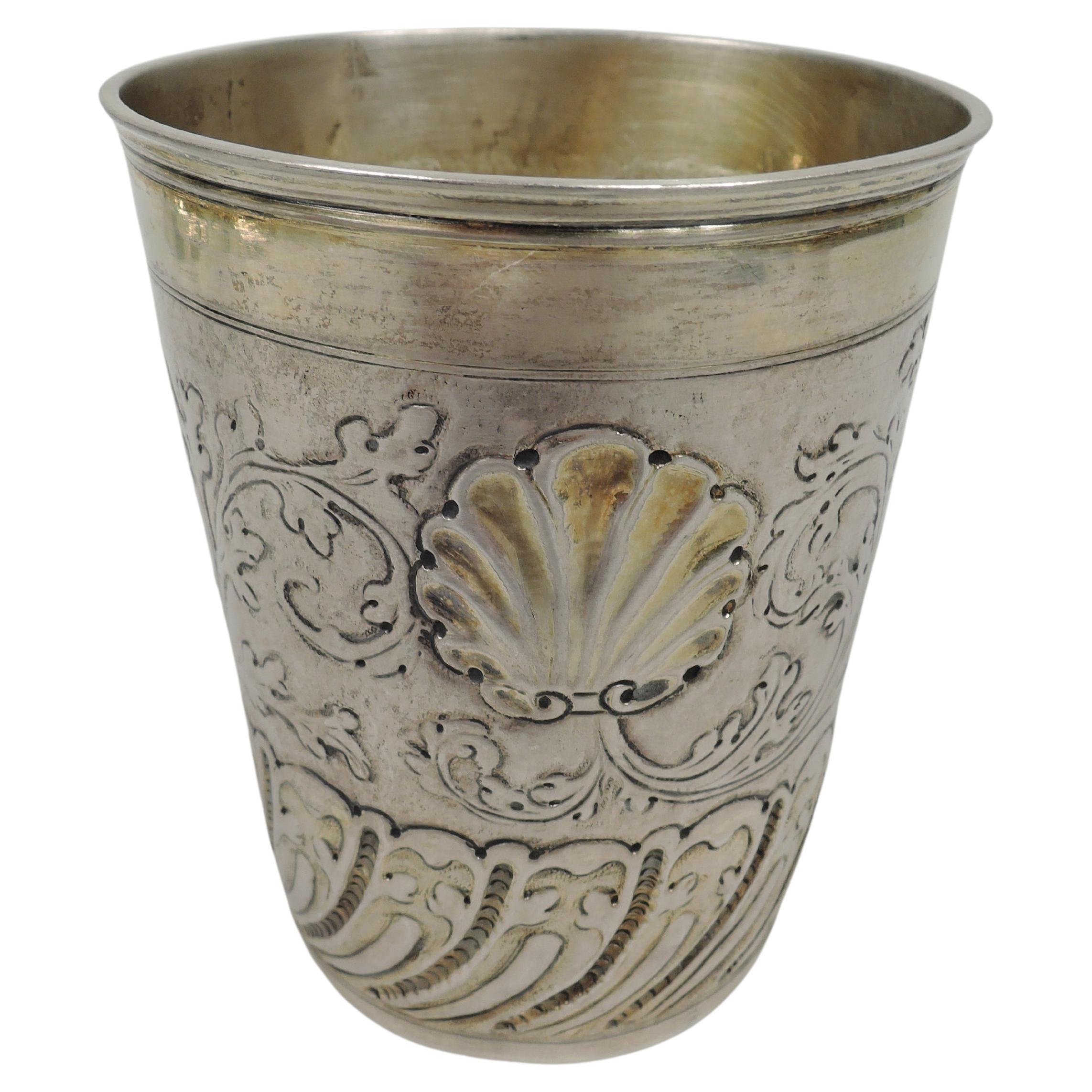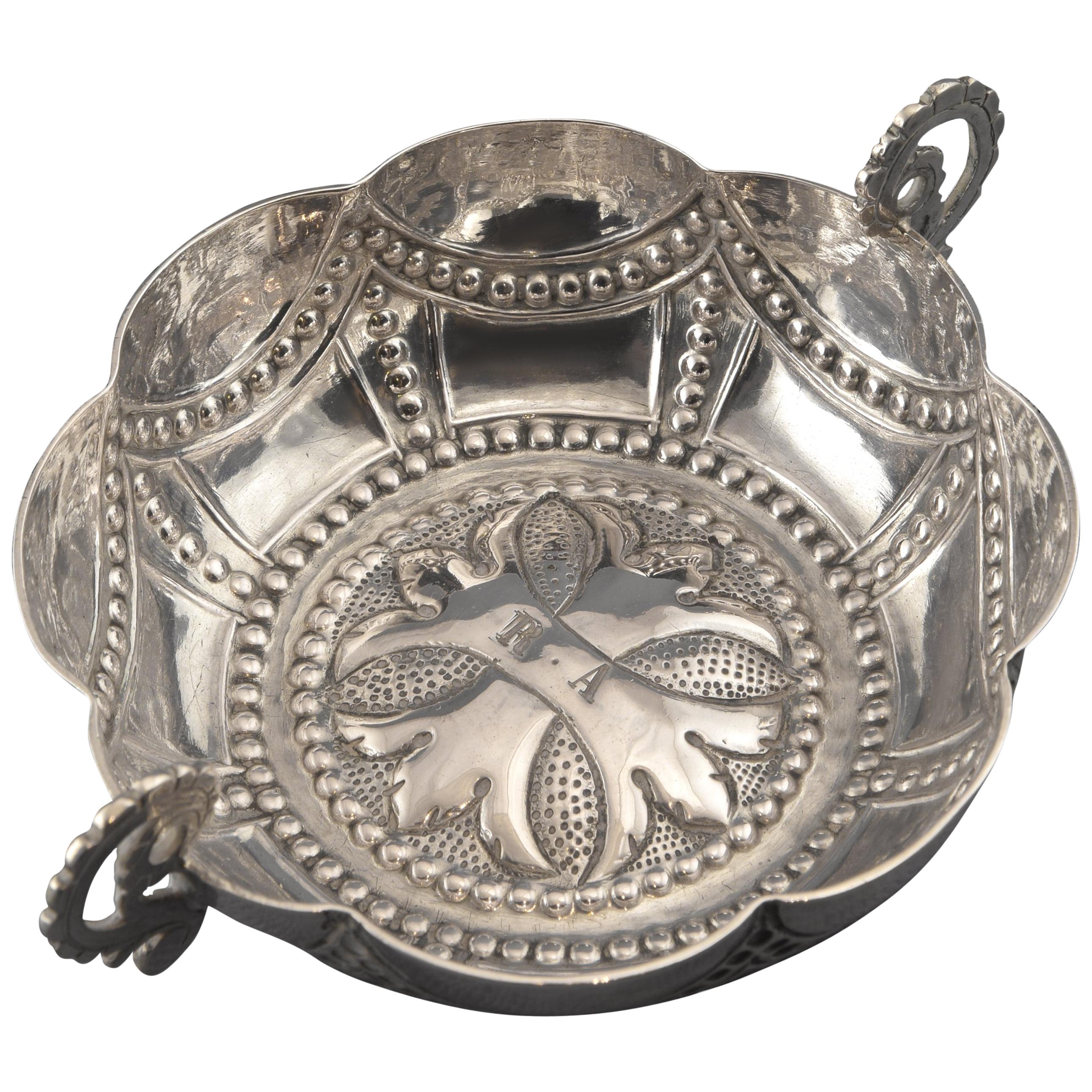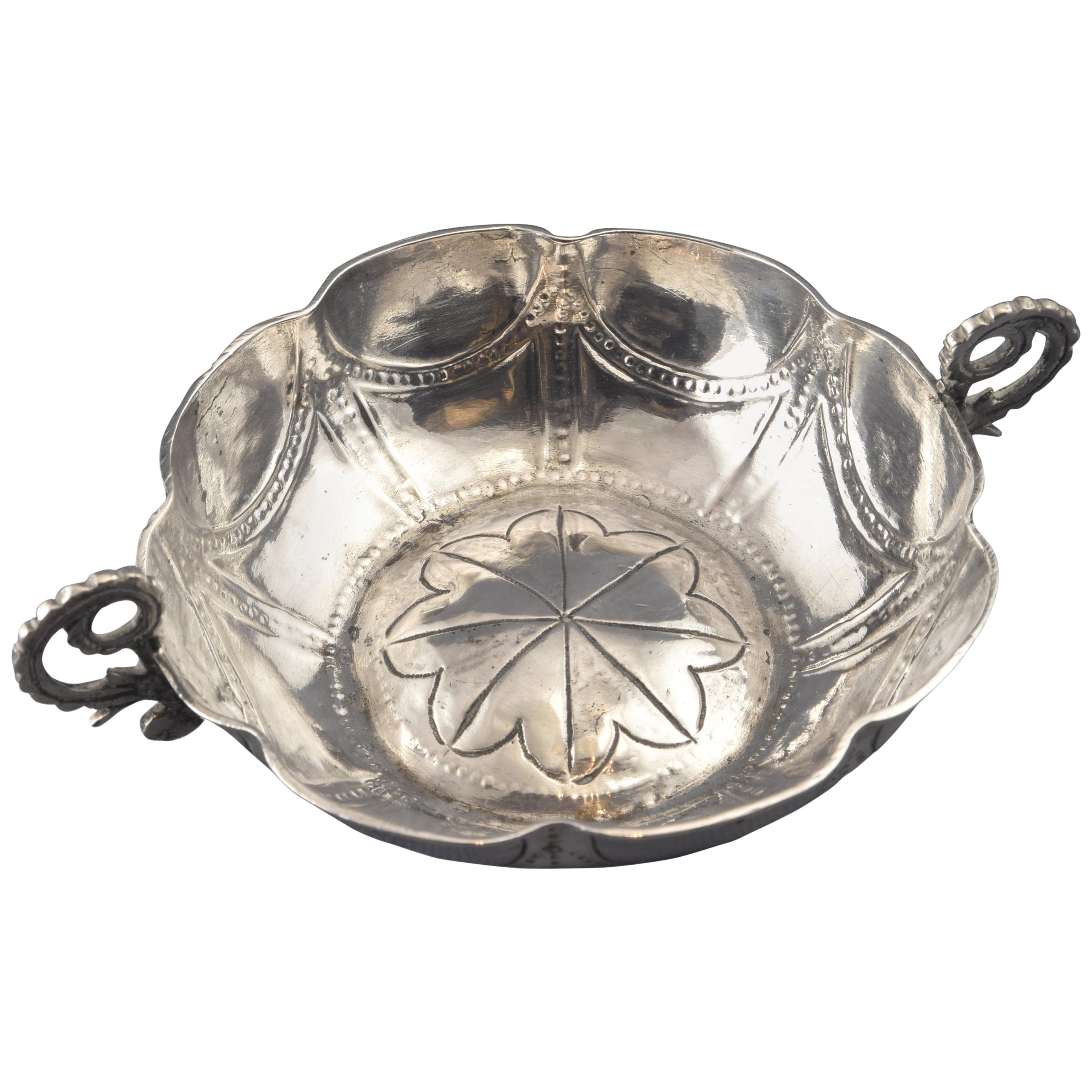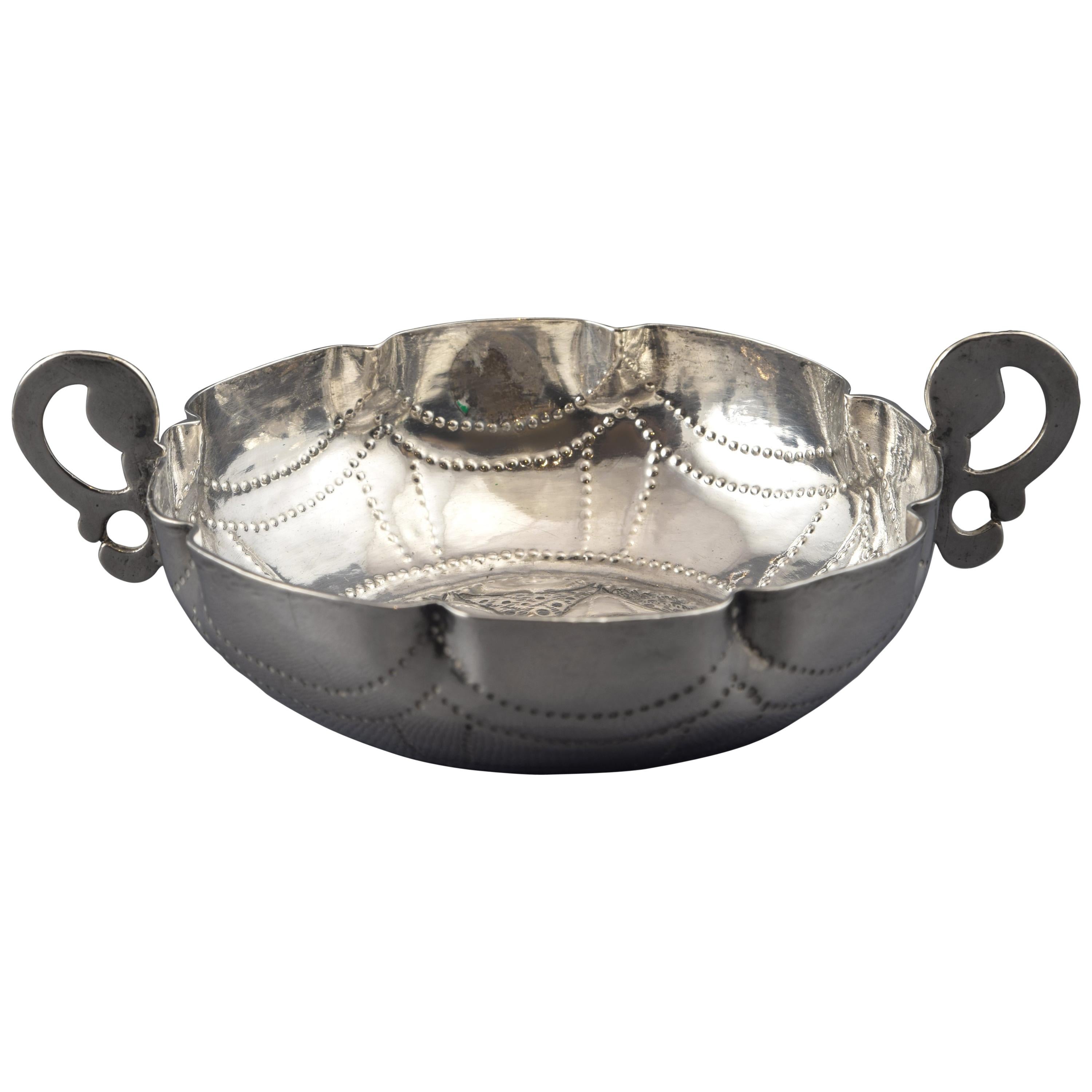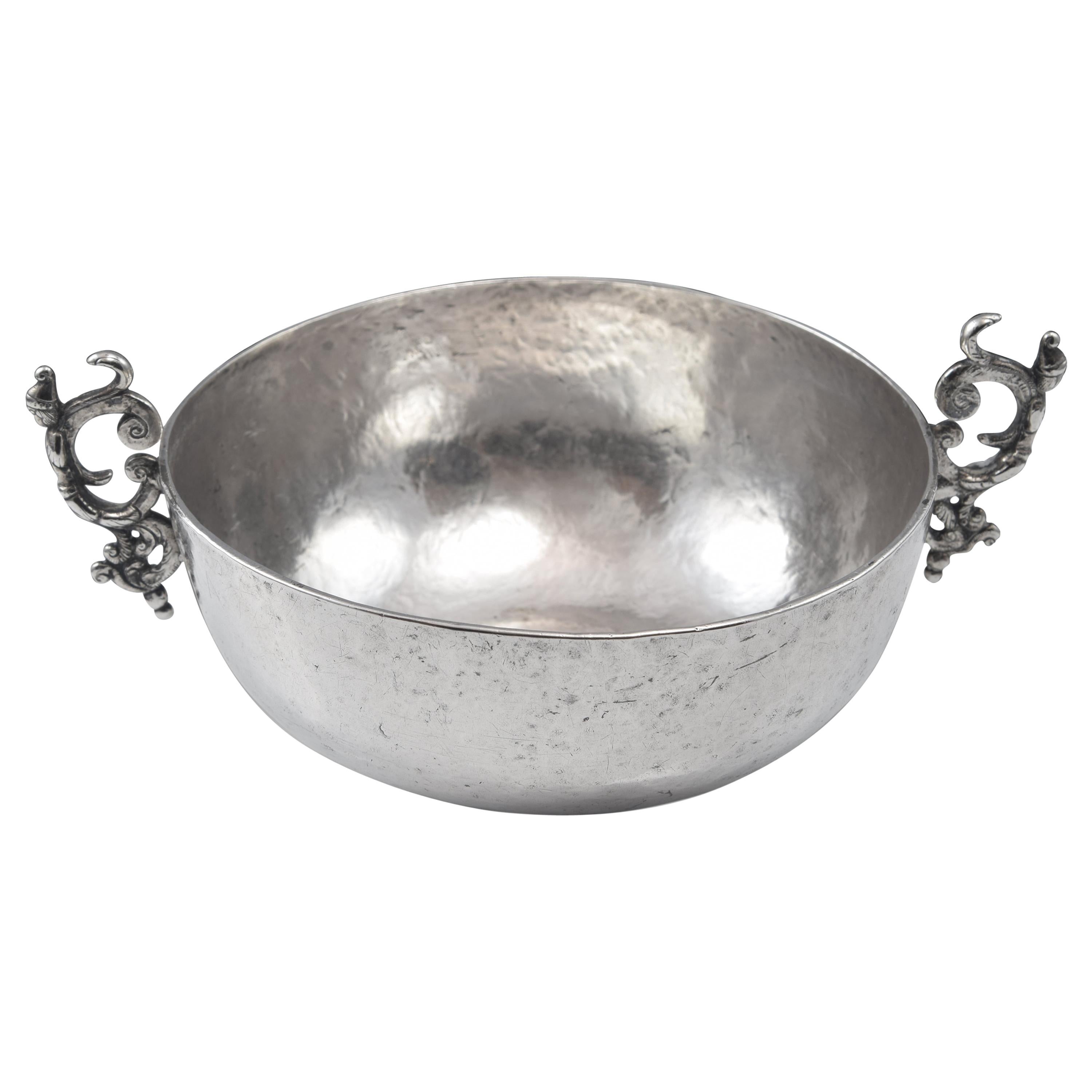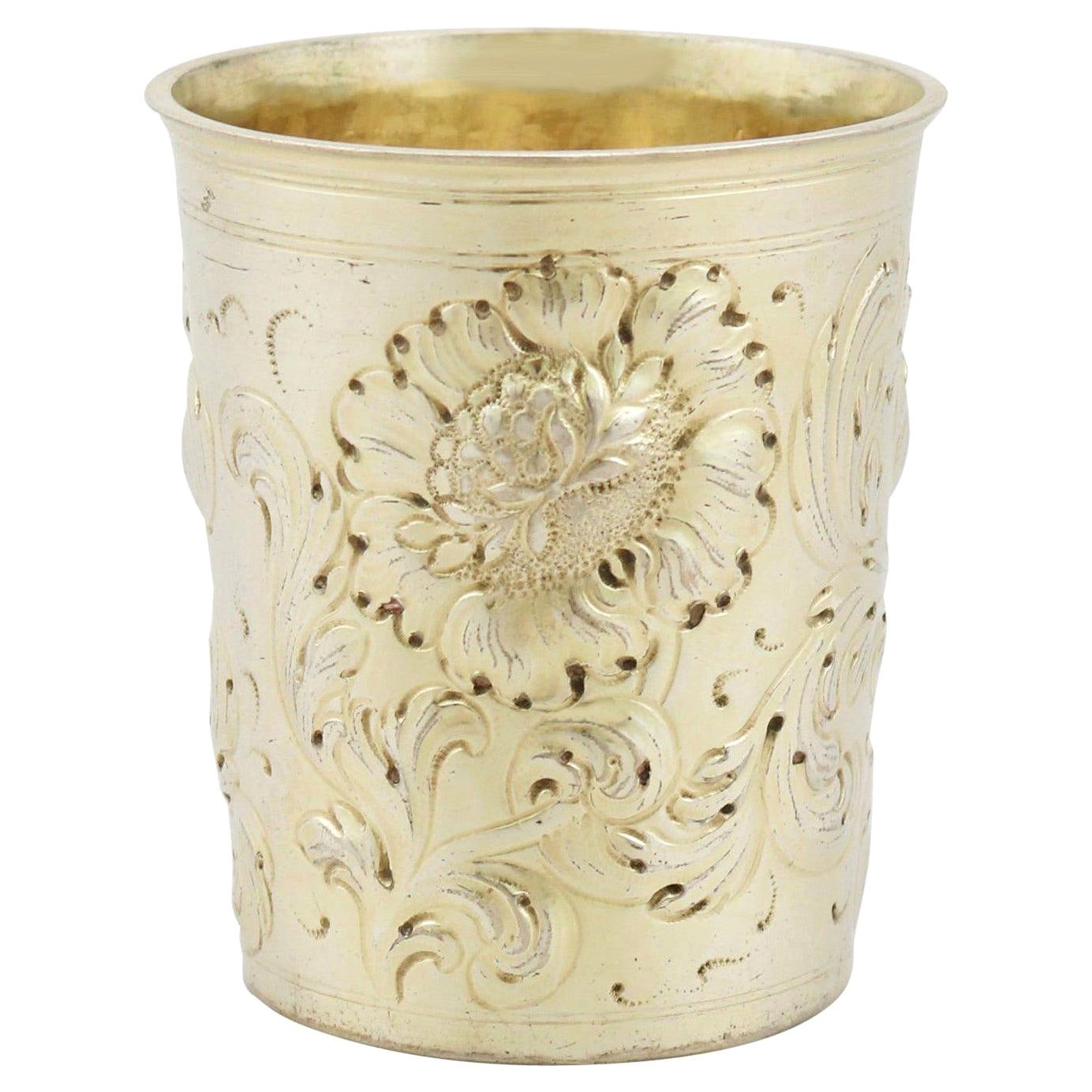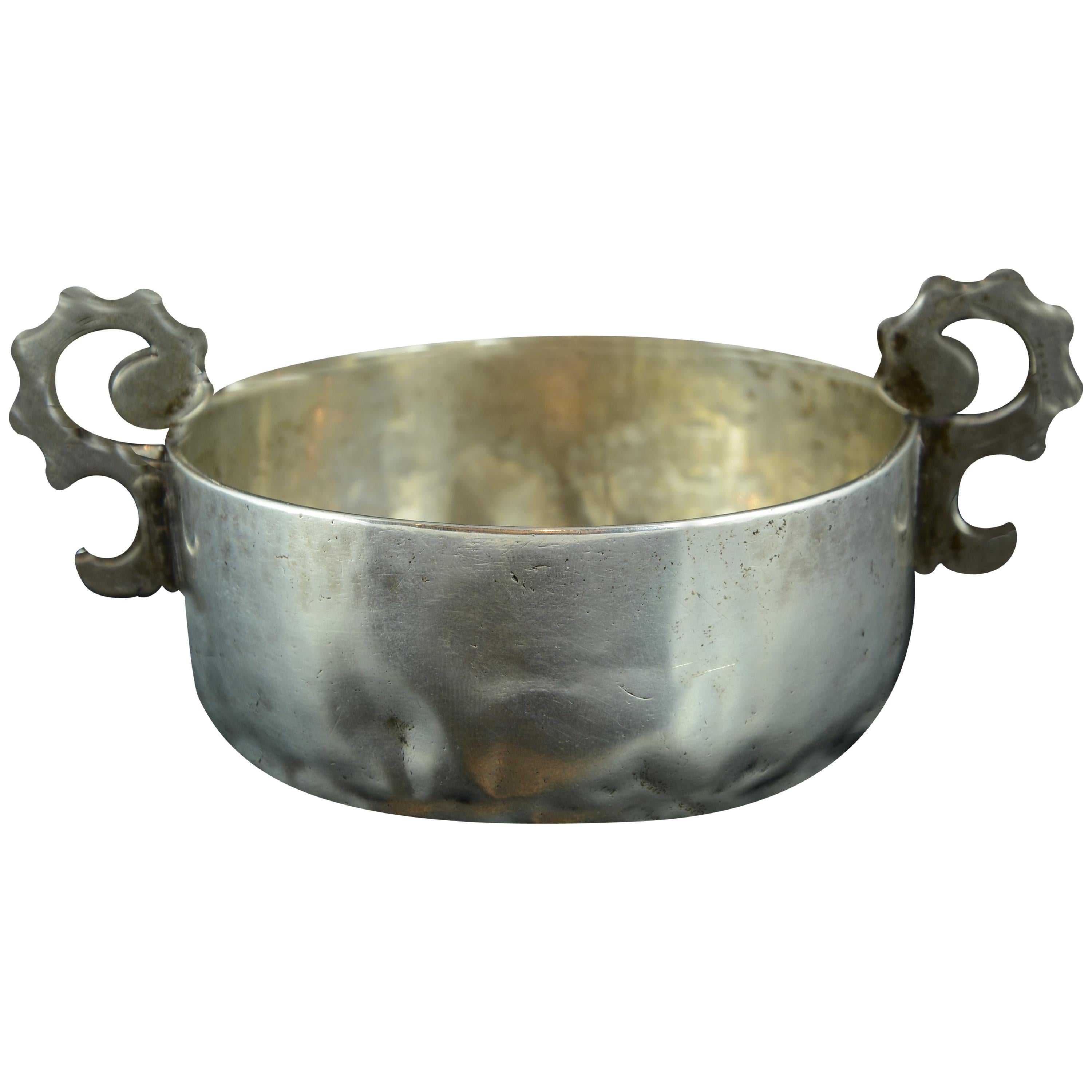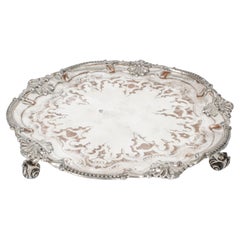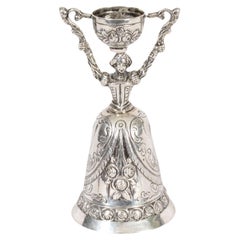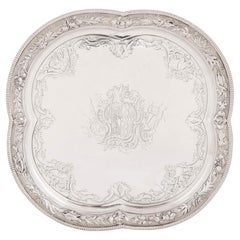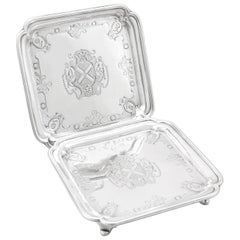
Antique Silver Gilt Chalice Cup by Paul de Lamerie, 1745, 18th Century
View Similar Items
Want more images or videos?
Request additional images or videos from the seller
1 of 11
Antique Silver Gilt Chalice Cup by Paul de Lamerie, 1745, 18th Century
About the Item
- Creator:Paul de Lamerie (Maker)
- Dimensions:Height: 10.44 in (26.5 cm)Width: 5.12 in (13 cm)Depth: 4.53 in (11.5 cm)
- Style:George II (Of the Period)
- Materials and Techniques:
- Place of Origin:
- Period:1740-1749
- Date of Manufacture:1745
- Condition:
- Seller Location:London, GB
- Reference Number:Seller: 056431stDibs: LU950614705272
About the Seller
5.0
Platinum Seller
These expertly vetted sellers are 1stDibs' most experienced sellers and are rated highest by our customers.
Established in 1983
1stDibs seller since 2012
1,195 sales on 1stDibs
Typical response time: 1 hour
Associations
LAPADA - The Association of Arts & Antiques Dealers
More From This SellerView All
- Antique George III Old Sheffield Silver Plated 18th CenturyLocated in London, GBThis is an exquisite English antique old Sheffield plate salver, circa 1780 in date. The elegant raised pie crust border shaped salver featu...Category
Antique 1780s English George III Sheffield and Silverplate
MaterialsSheffield Plate
- Antique George III Old Sheffield Silver on Copper Basket, 18th CenturyLocated in London, GBThis is a fabulous antique Neo-classical George III Old Sheffield plate silver on copper bread basket / fruit dish, circa 1780 in date. ...Category
Antique 1780s English George III Sheffield and Silverplate
MaterialsSheffield Plate
- Antique Dutch Silver Marriage Cup 19th CenturyLocated in London, GBThis is a charming antique .835 silver marriage cup, with Dutch hallmarks, circa 1880 in date. Condition: In excellent condition with no dings, dents...Category
Antique 1880s German Sterling Silver
MaterialsSterling Silver
- Italian Pietra Dura Mounted Brass and Alabaster Comport Dish, 19th CenturyLocated in London, GBThis is a superb quality antique Italian Pietra Dura mounted, gilt brass and alabaster table-centre comport dish, dating from the late 19th century. With striking pierced Neo-Goth...Category
Antique 1890s Italian More Dining and Entertaining
MaterialsAlabaster, Brass
- Antique Rare Georgian Sterling Silver Teapot by Paul Storr 1817, 19th CenturyBy Paul StorrLocated in London, GBThis is an exceptional and very rare antique English George III sterling silver teapot by the world-famous silversmith, Paul Storr, and bearing hallmarks for 1817. This splendid teapot is of a delightful shape and it is profusely chased with half ribbed fluting decoration. It is further embellished with wonderful foliate motifs below and above the spout and stunning gadrooned shaped borders to the top of the teapot and the base. The remarkable quality flush hinged lid is also beautifully surmounted by a delightful round finial. It features an exceptional horn handle with striking details, proving the silversmith's exceptional mastery in the creation of unique and luxurious silverware - Paul Storr never tired of adding detail to create a true piece of artwork. The underside of the teapot bear full hallmarks: the Lion passant for sterling silver, the leopard head for London, the letter for 1817 and the maker's marks 'PS' for Paul Storr. There is no mistaking its unique quality and design, which is sure to make it a treasured piece by any discerning collector. Condition: In excellent condition with clear hallmarks and no dings, dents or signs of repair. Please see photos for confirmation. Dimensions in cm: height 12.5 x width 18 x depth 18 Weight 0.88 kg Dimensions in inches: height 5 inches x width 7 inches x depth 7 inches Weight 28.2 troy oz Paul Storr born in London England in 1771, was to become one of the most talented silversmiths of the nineteenth century. Today his legacy of exceptionally well crafted silver, found worldwide in museums and private collections, leaves one in awe when compared to that of his contemporaries.After having served a seven year apprenticeship from the age of 14, he began his career in 1792 when he went into a brief partnership with William Frisbee. This did not last and in 1793 a new mark, (his initials ‘P S’) was entered. By the beginning of the nineteenth century he had established himself as one of London’s top silversmiths producing, amongst others, commissions for Royalty. In 1801 he married Elizabeth Susanna Beyer with whom he was to have ten children. In 1807 Paul Storr entered into a working relationship with Philip Rundell and by 1811 was a partner, and managing the workshops for Rundell, Bridge & Rundell. During this period he kept his own marks and separate workshop. However it was through Rundell, Bridge & Rundell who were appointed Goldsmith in Ordinary to George III in 1804 that his reputation as a master silversmith grew. His talents lay in being able to transform ideas and designs from Rundell, Bridge & Rundell’s designers, William Theed...Category
Antique 1810s English George III Sterling Silver
MaterialsSterling Silver
- Antique George III Sterling Silver Salver by Paul Storr 1811 19th CenturyBy Paul StorrLocated in London, GBThis is a wonderful English antique George III sterling silver 10 inch salver, by the world famous silversmith Paul Storr. It has clear hallmarks for London 1811 and the makers mark of Paul Storr. It is typical of his work with the raised gadrooned rim with anthemion at intervals, on four fabulous foliate bracket feet. The salver is engraved with a crest and motto and the underside is later engraved Charlotte J. Parke from C. J. Parke, March 1893' The centre is engraved with a crest above a motto 'True and Fast' and I have researched this crest: The Crest of Parke The crest as engraved upon this George III English Sterling Silver Footed Salver by Paul Storr hallmarked London 1811 is that of the family of Parke. It may be blazoned as follows: Crest: A stag’s head couped sable holding in the mouth a key or Motto: True and fast The family of Parke originally hailed from the County of Cumberland in the northeast of England1 later settling in the County of Dorset at Henbury House, Sturminster Marshal, near Wimborne. Given the evidence of the inscription found on the underside of the salver ‘Charlotte J. Parke from C. J. Parke, March 1893’ it was undoubtedly at one time in the possession of Charles Joseph Parke (died 9th March 1893) of Henbury House aforesaid and gifted to Charlotte Josephine Parke (baptised 4th January 1857 died 2nd January 1941) his third daughter by his wife, Ellen Mary Ethelston. I would venture the following hypothesis that the salver was bequeathed to Charlotte in her father’s will that was granted probate at London on the 20th May 1893. The ‘March 1893’ of the inscription acts as a remembrance of the month of the death of her father. It was noted that Charlotte’s father left an estate worth some £66,892, 19 shillings and one pence, a very considerable sum in the last decade of the 19th Century and even thereafter. Charlotte never married and was living at the time of her death at The Coppice, Sixpenny Handley in the County of Dorset. Her will was proved for probate at Llandudno on the 25th March 1941. She left an estate worth £18,866, 10 shillings and 4 pence. Again, a comfortable sum in 1941. See the photo of Henbury House, Sturminster Marshal, near Wimborne, Co. Dorset. The former seat of the Parke family. The house was destroyed by fire, the remains of which were demolished in the 1990's. There is no mistaking its unique quality and design, which is sure to make it a treasured piece by any discerning collector. Condition: In excellent condition with clear hallmarks and no dings, dents or signs of repair. Please see photos for confirmation. Dimensions in cm: Height 2 x Width 26.5 x Depth 26.5 Weight 0.69 kg Dimensions in inches: Height 1 inch x Width 10 inches x Depth 10 inches Weight 1.5 lbs Paul Storr born in London England in 1771, was to become one of the most talented silversmiths of the nineteenth century. Today his legacy of exceptionally well crafted silver, found worldwide in museums and private collections, leaves one in awe when compared to that of his contemporaries.After having served a seven year apprenticeship from the age of 14, he began his career in 1792 when he went into a brief partnership with William Frisbee. This did not last and in 1793 a new mark, (his initials ‘P S’) was entered. By the beginning of the nineteenth century he had established himself as one of London’s top silversmiths producing, amongst others, commissions for Royalty. In 1801 he married Elizabeth Susanna Beyer with whom he was to have ten children. In 1807 Paul Storr entered into a working relationship with Philip Rundell and by 1811 was a partner, and managing the workshops for Rundell, Bridge & Rundell. During this period he kept his own marks and separate workshop. However it was through Rundell, Bridge & Rundell who were appointed Goldsmith in Ordinary to George III in 1804 that his reputation as a master silversmith grew. His talents lay in being able to transform ideas and designs from Rundell, Bridge & Rundell’s designers, William Theed...Category
Antique 1810s English George III Sterling Silver
MaterialsSterling Silver
You May Also Like
- 18th Century Silver Salver by Paul de LamerieBy Paul de LamerieLocated in London, GB18th century silver salver by Paul de Lamerie English, 1744 Height 3cm, diameter 27cm Hailing from the workshop of the eminent Dutch-born English silversmith, Paul de Lamerie (1688...Category
Antique 18th Century English Rococo Sterling Silver
MaterialsSilver
- Antique George II Britannia Standard Silver Salvers by Paul de LamerieBy Paul de LamerieLocated in Jesmond, Newcastle Upon TyneAn exceptional, fine and impressive pair of antique Georgian English Britannia silver salvers made by Paul de Lamerie; an addition to our tray and salver collection. These excepti...Category
Antique 1730s British George II Serving Pieces
MaterialsSilver, Britannia Standard Silver
- Antique German Classical Parcel Gilt Silver Beaker Cup 18th CenturyLocated in New York, NYGerman Classical silver beaker cup, 18th century. At top leafing scrollwork and scallop shells; at bottom twisted leaf-and dart border. Ornament chased and heightened with engraving....Category
Antique 18th Century German Baroque Sterling Silver
MaterialsSilver
- Silver Cup "Tembladera", 18th CenturyLocated in Madrid, ESWithout hallmarks. Silver drinking cup with smooth edges, handles in the shape of a crowned animal (rampant lions with curved tail towards the back) and a decoration at the bottom o...Category
Antique 18th Century European Neoclassical More Dining and Entertaining
MaterialsSilver
- Silver Cup "Tembladera", 18th CenturyLocated in Madrid, ESWithout hallmarks. With property initials. Container known as catavinos (wine cup) or tembladera with two curved flat handles decorated with simplified plant elements, and a line of...Category
Antique 18th Century European Neoclassical More Dining and Entertaining
MaterialsSilver
- Silver Cup "tembladera", 18th CenturyLocated in Madrid, ESWithout hallmarks. Container known as catavinos (wine tasting cup) or tembladera with two flat handles in the form of closed "S" (with simplified vegetable decoration) and a line "d...Category
Antique 17th Century European Baroque More Dining and Entertaining
MaterialsSilver

